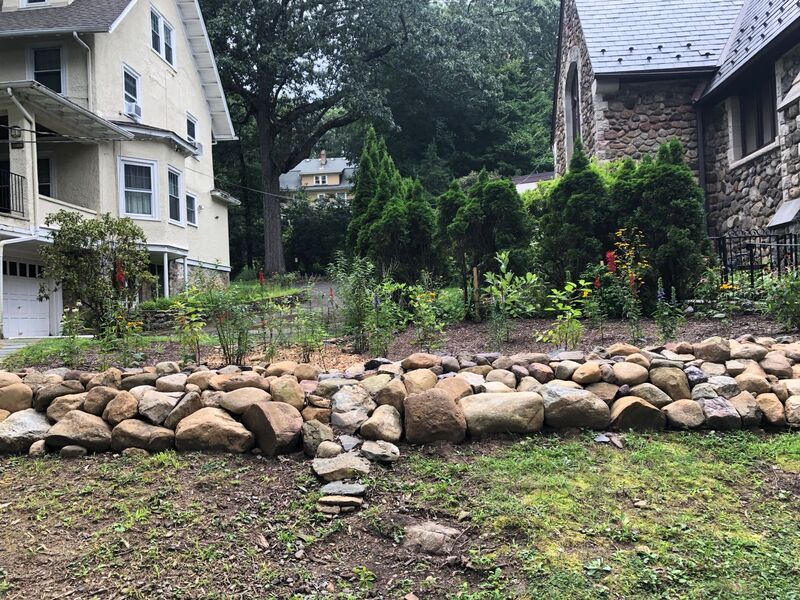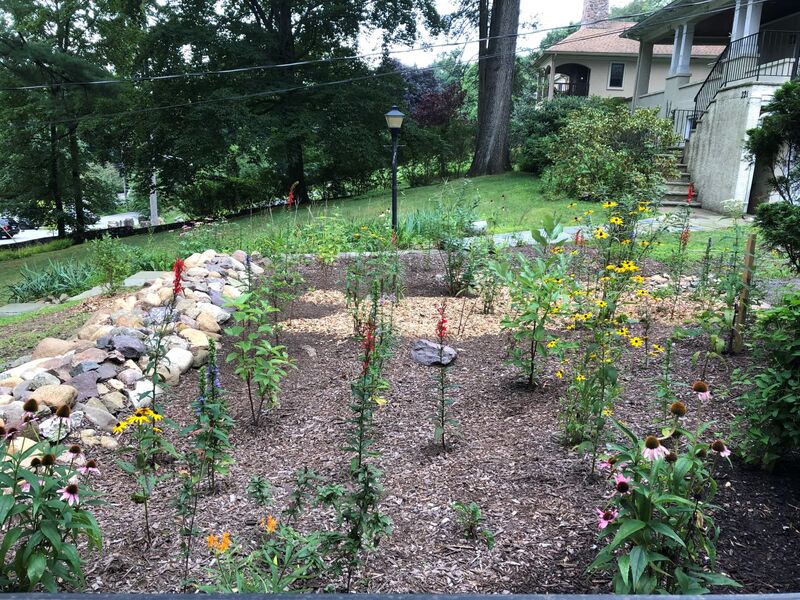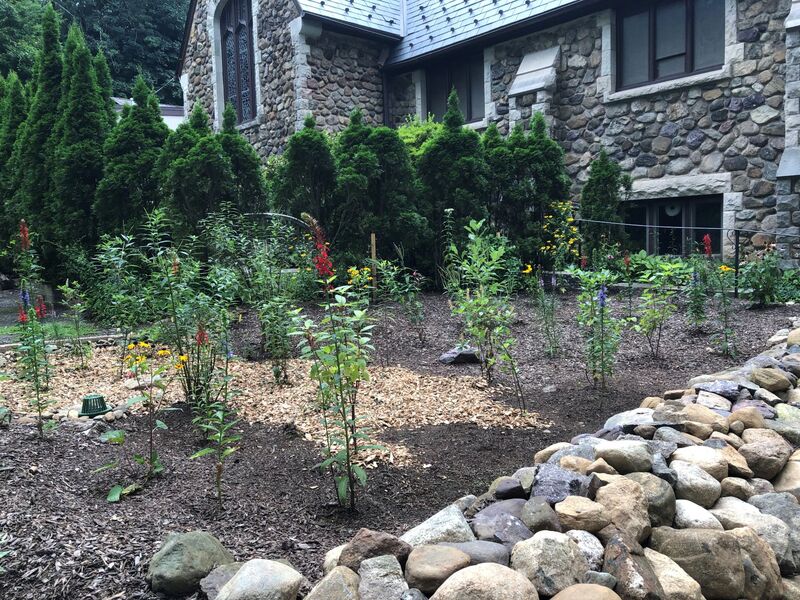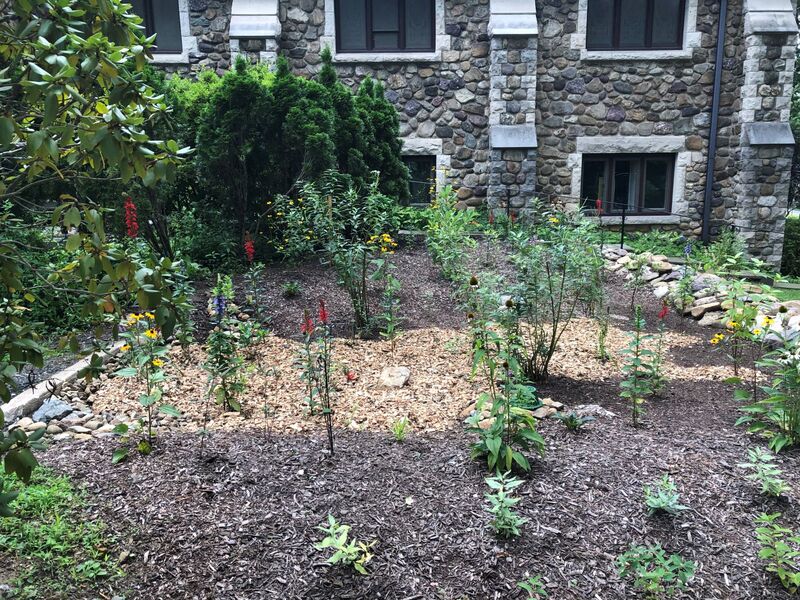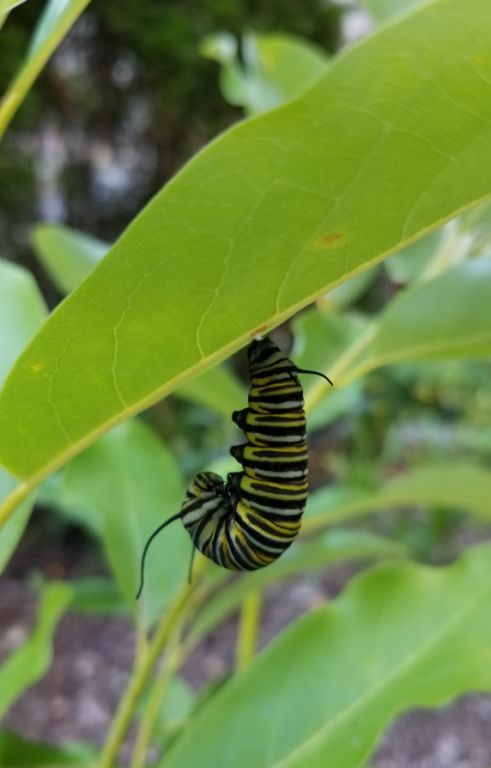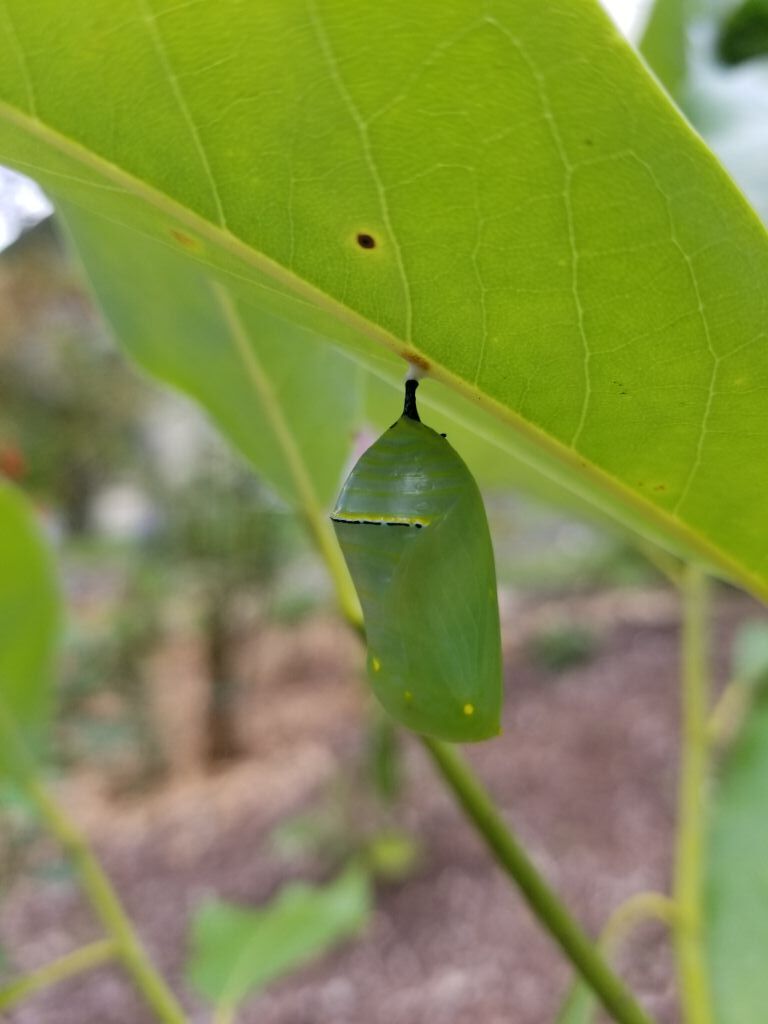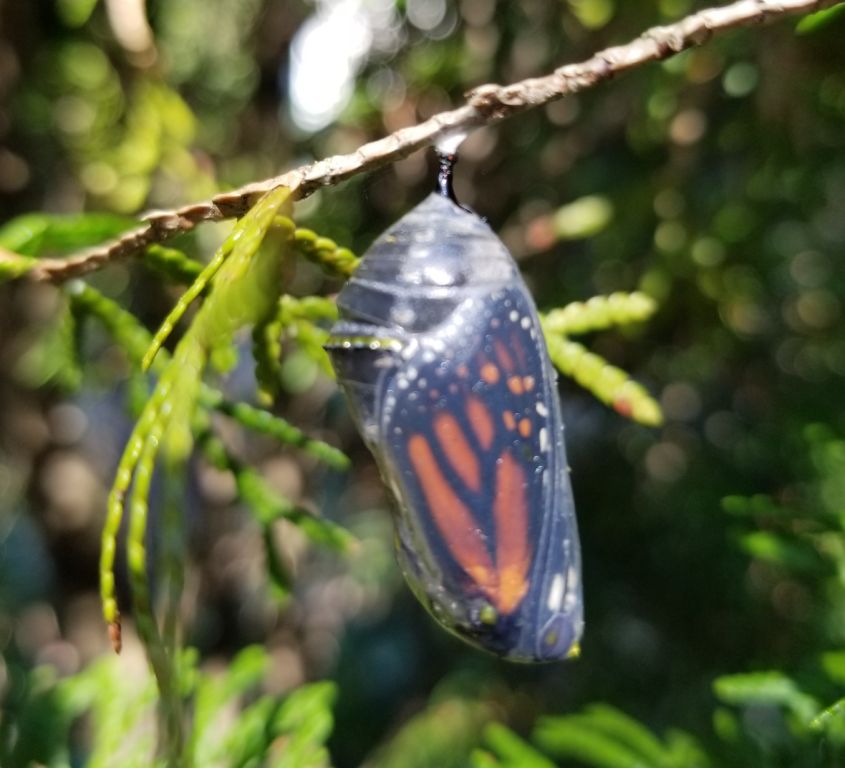ST. PETER'S & GARDEN MAGIC HONORED BY
MORRIS COUNTY FREEHOLDERS

In February, 2020, the Morris County Freeholders adopted a resolution congratulating St. Peter's and Brian & Sue Marshall for our next generation Rain Garden. The Freeholders highlighted the rain garden's contribution to the environmental well-being of the county. By reducing the negative impacts of erosion and pollutants caused by storm-water runoff our natural water resources are protected. The garden also provides a beautiful space to promote the growth of native flora and fauna as well as a learning center teaching us all to be good stewards of the earth. Congratulations to Brian & Sue and all who helped bring this project to fruition.
“Yet he did not leave himself without witness, for he did good by giving you rains from heaven
and fruitful seasons, satisfying your hearts with food and gladness.” —Acts 14:17
and fruitful seasons, satisfying your hearts with food and gladness.” —Acts 14:17
St. Peter’s rain garden is now fully functional! The garden captures storm water and redirects it to seep into the ground or to be taken up by the native garden plants. Currently, many of the plants are flowering so they are attracting a variety of pollinators, such as hummingbirds, butterflies, dragonflies and bees. However, the rain garden will continue to function during all seasons: In the Fall when the plants are growing less, the plant roots will continue to aid in infiltration; In the Winter when the ground is frozen, storm water runoff will still be caught in the rain garden, diminishing peak flows, flooding and erosion.
As time passes, the plants in the garden will continue to grow and fill out, and the garden will appear fuller. The perennials—purple coneflower, cardinal flower, black-eyed Susan, swamp milkweed—that die back over the winter will return. The shrubs—buttonbush and sweet pepperbush—will grow and expand, and the sweetbay magnolia may even begin to look like a small tree rather than a shrub. As we observe the rain garden in action we may make additional changes to inlets, outlets, etc. to enable it to work even better. Like all gardens, the St. Peter’s rain garden will require some ongoing maintenance, like weeding and mulching, to keep it attractive and functioning well.
St. Peter’s rain garden is now fully functional! The garden captures storm water and redirects it to seep into the ground or to be taken up by the native garden plants. Currently, many of the plants are flowering so they are attracting a variety of pollinators, such as hummingbirds, butterflies, dragonflies and bees. However, the rain garden will continue to function during all seasons: In the Fall when the plants are growing less, the plant roots will continue to aid in infiltration; In the Winter when the ground is frozen, storm water runoff will still be caught in the rain garden, diminishing peak flows, flooding and erosion.
As time passes, the plants in the garden will continue to grow and fill out, and the garden will appear fuller. The perennials—purple coneflower, cardinal flower, black-eyed Susan, swamp milkweed—that die back over the winter will return. The shrubs—buttonbush and sweet pepperbush—will grow and expand, and the sweetbay magnolia may even begin to look like a small tree rather than a shrub. As we observe the rain garden in action we may make additional changes to inlets, outlets, etc. to enable it to work even better. Like all gardens, the St. Peter’s rain garden will require some ongoing maintenance, like weeding and mulching, to keep it attractive and functioning well.

